
–– The newsletter on wine and wine travel ––
–– Read by wine lovers and wine professionals all over the world ––
–– On the internet since 1996 ––
Lazy summer days with undemanding wines?
 For many, the month of July means sun and holidays. A few weeks to relax and do whatever you like. And what about the wines? Shouldn’t they be undemanding as well? Probably, and the good news is that undemanding wines have become much more fun. Today, some wines do not require a single bit of intellectual reasoning. But that doesn’t mean that they are trivial.
For many, the month of July means sun and holidays. A few weeks to relax and do whatever you like. And what about the wines? Shouldn’t they be undemanding as well? Probably, and the good news is that undemanding wines have become much more fun. Today, some wines do not require a single bit of intellectual reasoning. But that doesn’t mean that they are trivial.
They are not so expensive, these wines, but they are never the cheapest. And that is the only criterion. You make a deal with yourself that you are now “allowed” to drink without having to say something intelligent about the wine or even to remember the wine afterwards. If you do remember it anyway, well, then it was probably excellent.
We all need some undemanding drinking sometimes (in moderation, of course).
Or you do just the opposite. Not a bad idea either.
During the summer, maybe you have more time to eat long, delicious dinners and then you want wines to match. Summer is an excellent time to treat yourself to some extra good food. If you eat outdoors, you may avoid serving the most expensive and finest wines; the scent of flowers will compete with the wine. But have you ever experienced a summer when you can sit outside and have dinner every night?
In fact, it is much harder to taste wine outdoors than indoors. It probably depends not only on the aromas of the surroundings but also on the wind that makes it harder to feel the aromas of the wine. We always avoid having serious wine tastings or serving really exclusive wines outdoors. It is not fair to the wines.
Even winemakers can usually take it easy during part of the summer. It depends, though. In France, some take a couple of weeks off in August. At this time, the vines can take care of themselves fairly well on their own. It is only a month or so until it is time to harvest, and the vines are largely self-sufficient.
However, it has happened that the maturation has come faster than the winegrowers expected. They have to rush home and hunt for the secateurs or refuel the harvesting machine.
This year the weather has been tricky, and the harvest will probably be a little later than usual. So, the August holiday is perhaps saved. As usual, it all depends. The winegrowers are just as much dependent on the forces of the weather, just as the holidaymakers. However, a bit more is at stake. It’s about the whole year’s income.
No matter how unpretentious the summer is, do not forget to chill your wines. Even the red ones are tastier a little cool. They heat up quickly in the glasses. Here’s some advice and tips on how to get the wine at the right temperature: Serve your wine at the right temperature.
Wine tours
We are looking forward to touring the vineyards again. Perhaps you do too? Life slowly begins to return to normal.
We make wine tours for the wine lovers that want to experience something special. Visit the most interesting growers. Enjoy the best wines and gourmet meals. Wine tours that give you that little extra (or much extra, actually) that no one else can give.
On the program we have three extraordinary tours to the southern hemisphere beginning of 2022. We are right now planning for more tours during 2022 and we will have dates and more information for you within a few weeks.
You cannot have a better cicerone – more experienced and more wine-knowledgeable – among the vineyards.
We have written 11 wine books. Arranged many hundreds of wine tours on four different continents. We have been asked to assist as consultants or experts in wine tourism by, among others, the United Nations World Tourism Organization (UNWTO), USAid, Vinitaly and many others. We have organised wine tours for more than 20 years.
We hope to meet you in the vineyards shortly.
Enjoy the Brief!
Britt & Per
If you appreciate what we do, you can help us:Tell your friends about the Brief or send it to them.
Like us and follow us on social media:
What’s on at BKWine Tours
BKWine is also one of the world’s leading wine tour operators. Here’s what we currently have on our scheduled wine tour program:
- Chile-Argentina, January 17-30, 2022
- South Africa, February 9-18, 2022
- New Zealand, March 10-25, 2022
We also make custom designed wine tours.
We’re different than most other wine tour operators. We are people who know wine inside out, who travel constantly in wine regions, who write award winning books about wine. Who do this out of passion. Our tours are different from others. More in wine tours: BKWineTours.com.
Read our books
We have written eleven wine books. Unfortunately, only one of them has been translated to English; the others are (so far) only available in Swedish. This is the one that is available in English:
All our books are on wine, but on different subjects: wines of the Languedoc, wine growing and wine making, the wines of France, Tuscany, Bordeaux, Piedmont, Burgundy, Champagne, France… Several have won prestigious prizes and awards from Gourmand International, OIV and others. Read more on all our wine books.
News from the world of wineWhat’s been happening in the world of wine recently. |
Refreshing white wine for lazy summer days: Txakoli from the Basque Country
|
Austrian vineyard maps on your computer
Austria has about 48,000 hectares of vineyards, mainly located in the eastern part of the country. Although the country is best known for the white grüner veltliner wines, mainly from Lower Austria (Niederösterreich), red wines are increasingly appreciated. The largest region is Niederösterreich, where the vineyards are planted along the spectacularly beautiful Danube Valley west of Vienna. The second largest is Burgenland which includes Neusiedlersee, known for its red wine from zweigelt and other local grapes and sweet wines. You can find it here: austrianvineyards |
Terra Vitis and HVE – the battle of the sustainability labels
Terra Vitis describes itself as an alternative route between organic farming and HVE, the Haute Valeur Environnementale, the sustainability label under the French Ministry of Agriculture. Terra Vitis believes that many of the rules of the two labels are similar but that Terra Vitis has greater control of the use of pesticides and, above all, they severely limit the use of carcinogenic synthetic products (so-called CMR). Approximately 6,700 producers are HVE certified. Read more terredevins. Note: “Sustainable” has no official definition. There are many different sustainable certifications, with varying rules. “Organic”, on the other hand, has one single definition within the EU; all organic wines follow the same rules and must have the green EU leaf on the label. Read: If you want to know more about sustainable, organic, etc., then read our book “Biodynamic, Organic and Natural Winemaking; Sustainable Viticulture and Viniculture”. |
Your wine contains less sulphites than you might think
The French Association of Oenologists, the Union des Oenologues de France, surveyed its members. 468 responded to the survey. The conclusion was drawn that the sulphite levels have decreased by around 25% in the last 10 years. The most significant reduction is for whites and rosés. 71% of these wines contain, according to the oenologists surveyed, less than 100 mg/l SO2 in the bottle compared to 26%, according to the same oenologists, ten years ago. The maximum level for conventional dry white wine is 200 mg/l, and for organic wine, 170 mg/l. Red wines fare better with lower sulphite content thanks to their polyphenols. 96% of red wines contain less than 100 mg/l compared to 59% ten years earlier. For red wines, the highest permitted level for conventional red wine is 150 mg/l, and for organic, 120 mg/l. Interesting figures. Read more vitisphere |
Swedes drink more expensive wines and craft beer during the pandemic
It is hard to know which trends are due to the pandemic and which ones will remain afterwards, said Ulf Sjödin. However, he believes that organic wine will continue to increase, sales of organic wines increased by 17% in 2020, and that buying more expensive wines also remains. Ulf Sjödin also noted the very strong development of craft beer in Sweden, a trend that will probably survive the pandemic as well. More info: wineintelligence |
Rosé wine, no longer just a fashion, according to Gilles Masson at Centre du Rosé in Provence
Consumption of rosé has increased by 40% world-wide in 15 years. Just over 11% of the consumption of still wines is rosé today. The Centre de Rosé is now preparing for the future. Gilles says that, among other things, they experiment with grapes from warmer countries, such as the Greek agiorgitiko, moschofilero and xinomavro and the Italian nero d’avola. They do studies on ancient, local grapes and new, resistant crossings that require less spraying. “Developing new crossings takes 15-20 years”, says Gilles. “We do it for it for our children.” Who will then be able to enjoy even better rosés. More on the Centre du Rosé: centredurose |
FeaturesArticles and features published on BKWine Magazine and on our wine travel blog and photography blog in the last month. |
An unusual Provence producer putting all bets on top-quality reds and not rosé
Read more in Britt’s article on BKWine Magazine: Château Palayson in Provence: Almost no rosé, instead they make top red wines. |
Alsace, Rhône, Provence, Bordeaux…, more news from the French Wine Company
Read more in Britt’s article on BKWine Magazine: Crispy Alsace Riesling, rosé from Bandol and Bellet, Saint Emilion and more from “the French Wine Company”. |
Rosé-season with chiaretto di bardolino
Britt and Per’s selection of chiaretto di bardolino, the pink wine from Veneto |
Starting to get the attention it deserves, cabernet franc | a grape variety profile | Britt on Forbes
This is the latest in our series of articles on grape varieties. You can find all on BKWine Magazine. Read more in Britt’s article on BKWine Magazine, originally published on Forbes: Cabernet franc, finally on its way to fame and fortune | Grape Profile | Britt on Forbes. |
Wines from the Canary Islands: surprising and historically significant | Britt on Forbes
Read more in Britt’s article on BKWine Magazine, originally published on Forbes: Amazingly fresh wines from the warm and windy Canary Islands. Who would have thought that possible? | Britt on Forbes. |
Artisan Wines, a young and ambitious producer in Burgenland
Read more in Britt’s article on BKWine Magazine: Red and white wines from Austrian producer Artisan Wines in Burgenland. |
Willi’s Wine Bar in Paris, a 40 year old pioneer | Britt on Forbes
Read more in Britt’s article on BKWine Magazine, originally published on Forbes: The legendary Willi’s Wine Bar, Paris’ first real wine bar, turns 40 | Britt on Forbes. |
Four different wine faults and how they can be avoided | Britt on Forbes
Read more in Britt’s article on BKWine Magazine, originally published on Forbes: Four common wine faults – that can be avoided with a touch of sulphur | Britt on Forbes. |
Wine ToursSome information on our current and future wine tours. Book a wine tour with the “world’s top wine tour operator” today (or when you feel like travelling to wine country). |
Malbec with character, mountains, wines from the Pacific coast, barbecue lunches with wine growers | wine tour in South America
Our bus will take us over the border to Chile, across the mighty Andes, an unforgettable experience. The border station is located at an altitude of over 3,000 meters. Once in Chile, we cross this narrow but long country, out to the Pacific coast. We visit Valparaíso, famous for its harbour and colourful houses, and the wine regions by the Ocean that take advantage of the coolness that comes from the cold water. We continue to Colchagua, one of the premier red wine districts, where we stay in the small town of Santa Cruz. We also have time to visit the two capitals, Buenos Aires and Santiago de Chile. Join us on our wine tour to South America! A superb wine adventure! Wine tour to Chile-Argentina, January 17-30, 2022. Book your wine tour with us now! |
Experience South Africa’s great wines, gastronomy and scenery | wine tour in South Africa
We visit some of our favourite growers. We like them because they make not only high-quality wines but also exciting and sometimes even unusual, wines. Our tour starts in Cape Town and then continues to the wine regions. We go to Elgin and Walker Bay, Franschhoek, Stellenbosch and a little further north, to Swartland. We get to know the two emblematic grape varieties, chenin blanc and pinotage, sparkling MCC, the spicy Malay cuisine and much, much more. Discover South Africa and get to know some of the country’s ambitious producers with us on this wine tour. Wine tour to South Africa, 9-18 February 2022. Book your wine tour with us now! |
Spectacular country, characterful wines | wine tour in New Zealand
We will visit around 20 different wineries in the country’s leading regions: Waiheke Island, Hawke’s Bay, Wairarapa, Marlborough and Central Otago. We have time to enjoy the spectacular nature between the wine tastings, and we sometimes make detours from the vineyards to see breath-taking natural phenomena, such as geysers and glaciers. Join us on our wine tour to New Zealand! An extraordinary adventure! Wine tour to New Zealand, March 10-25, 2022. Book your wine tour with us now! |


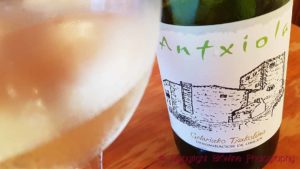 Txakoli is a special type of white wine from the Basque Country in northern Spain. It is always refreshing, sometimes slightly fizzy. You drink it as an aperitif or with fish and seafood and always young. We recently tasted Antxiola 2020 from a producer called Txakoli Zudugarai. I very much liked the high and fresh acidity, notes of herbs, citrus and green apples. The alcohol content is only 11%, which is also typical of a txakoli wine. The grape is the local hondarrabi zuri. The vineyards are located just east of the pleasant city of Bilbao, famous for the magnificent Guggenheim Museum. (~15 euro)
Txakoli is a special type of white wine from the Basque Country in northern Spain. It is always refreshing, sometimes slightly fizzy. You drink it as an aperitif or with fish and seafood and always young. We recently tasted Antxiola 2020 from a producer called Txakoli Zudugarai. I very much liked the high and fresh acidity, notes of herbs, citrus and green apples. The alcohol content is only 11%, which is also typical of a txakoli wine. The grape is the local hondarrabi zuri. The vineyards are located just east of the pleasant city of Bilbao, famous for the magnificent Guggenheim Museum. (~15 euro)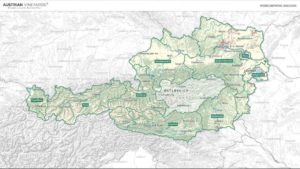 Wine lovers enjoy looking at maps of their favourite districts. Austrian Wine has now launched a digital atlas of the country’s wine region, the first in the world. The atlas shows all the regions, from the lowest level – Österreichischer Wein – to more than 4,300 single vineyards. You can also find information about the surface, altitude, average temperature, precipitation and hours of sunshine. A real gold mine of information, in other words.
Wine lovers enjoy looking at maps of their favourite districts. Austrian Wine has now launched a digital atlas of the country’s wine region, the first in the world. The atlas shows all the regions, from the lowest level – Österreichischer Wein – to more than 4,300 single vineyards. You can also find information about the surface, altitude, average temperature, precipitation and hours of sunshine. A real gold mine of information, in other words.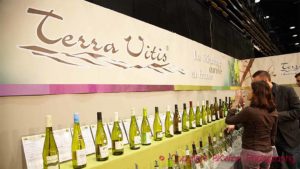 The battle for sustainability labels in France is intensifying. France’s first such label, Terra Vitis, has increased significantly in the past year. They have doubled their membership and now have 1,800 members with 45,000 hectares, equivalent to 300 million bottles a year. Their total area is over 5% of the entire French wine surface, a milestone for the organization.
The battle for sustainability labels in France is intensifying. France’s first such label, Terra Vitis, has increased significantly in the past year. They have doubled their membership and now have 1,800 members with 45,000 hectares, equivalent to 300 million bottles a year. Their total area is over 5% of the entire French wine surface, a milestone for the organization.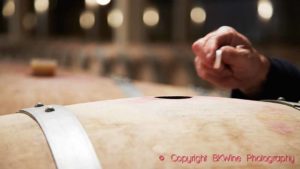 The discussion about sulphites in wine has been going on for a long time. Sulphites are added to most wines to stabilize them and protect them from premature oxidation and defects. How much you add varies depending on the type of wine. That the amount has decreased in recent years is quite certain but by how much?
The discussion about sulphites in wine has been going on for a long time. Sulphites are added to most wines to stabilize them and protect them from premature oxidation and defects. How much you add varies depending on the type of wine. That the amount has decreased in recent years is quite certain but by how much?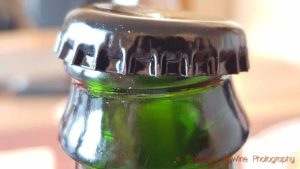 Earlier this year, Wine Intelligence conducted a market survey on consumer trends in the Swedish wine market. During a webinar, some of the results were presented. Ulf Sjödin, category manager at Systembolaget, the Swedish retail monopoly, participated. In 2020, Swedes bought more expensive wines at Systembolaget. 27% of the wines bought at Systembolaget cost 300 SEK (~30 euro) or more, which is not surprising. Fewer people went to restaurants, and with the money they saved, they indulged in better wines for dinners at home. Newly launched brands also did well, contrary to the perception held in many other countries, that wine drinkers during the pandemic preferred well-known brands.
Earlier this year, Wine Intelligence conducted a market survey on consumer trends in the Swedish wine market. During a webinar, some of the results were presented. Ulf Sjödin, category manager at Systembolaget, the Swedish retail monopoly, participated. In 2020, Swedes bought more expensive wines at Systembolaget. 27% of the wines bought at Systembolaget cost 300 SEK (~30 euro) or more, which is not surprising. Fewer people went to restaurants, and with the money they saved, they indulged in better wines for dinners at home. Newly launched brands also did well, contrary to the perception held in many other countries, that wine drinkers during the pandemic preferred well-known brands.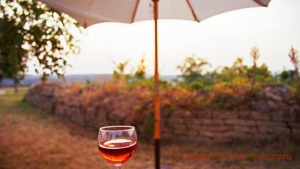 The world drinks more and more rosé wine, a fact that probably hasn’t escaped anyone. The rosé wine market has been revolutionized over the past 20 years. We recently listened to Gilles Masson, CEO of the Centre du Rosé in Provence, the world’s only research institute for rosé wines, at the occasion of the Concours Mondial de Bruxelles’ “pairing rosé with food” competition in l’Aquila. The rosé boom started as a fashion, he says, but is now a well-established wine style. It was consumers who drove demand in the beginning. The rosé wine was easy to drink, easy to like, unpretentious. But it was the winegrowers who ensured that the interest in rosé was kept alive by raising the quality. The work in the vineyard and the cellar changed. The modern, refreshing, pale rosé wine from Provence was created.
The world drinks more and more rosé wine, a fact that probably hasn’t escaped anyone. The rosé wine market has been revolutionized over the past 20 years. We recently listened to Gilles Masson, CEO of the Centre du Rosé in Provence, the world’s only research institute for rosé wines, at the occasion of the Concours Mondial de Bruxelles’ “pairing rosé with food” competition in l’Aquila. The rosé boom started as a fashion, he says, but is now a well-established wine style. It was consumers who drove demand in the beginning. The rosé wine was easy to drink, easy to like, unpretentious. But it was the winegrowers who ensured that the interest in rosé was kept alive by raising the quality. The work in the vineyard and the cellar changed. The modern, refreshing, pale rosé wine from Provence was created.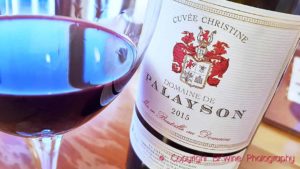 Château Palayson is in Provence, 45 kilometres west of Cannes, right next to the impressive, reddish-brown Rocher de Roquebrune. Nearby are famous wine villages such as Les Arcs and Le Muy and the city of Saint Raphaël. There is plenty of sun here, a magnificent region for viticulture. Most producers choose to make rosé wine, but Château Palayson has decided to go against the flow. Here, 90% of the production is red wine. Christine and Alan Rudd are a Swedish/American couple. They have owned Château Palayson since 1999. The rosé production in Provence was already booming when they came here in 1999, but since then, it has increased even more. “It’s a bit sad with all this rosé in Provence,” Christine says. “We knew from the beginning that we wanted to focus on red wine,” she continues. “And we wanted to plant cabernet sauvignon”.
Château Palayson is in Provence, 45 kilometres west of Cannes, right next to the impressive, reddish-brown Rocher de Roquebrune. Nearby are famous wine villages such as Les Arcs and Le Muy and the city of Saint Raphaël. There is plenty of sun here, a magnificent region for viticulture. Most producers choose to make rosé wine, but Château Palayson has decided to go against the flow. Here, 90% of the production is red wine. Christine and Alan Rudd are a Swedish/American couple. They have owned Château Palayson since 1999. The rosé production in Provence was already booming when they came here in 1999, but since then, it has increased even more. “It’s a bit sad with all this rosé in Provence,” Christine says. “We knew from the beginning that we wanted to focus on red wine,” she continues. “And we wanted to plant cabernet sauvignon”. We have tried several more wines from the online wine retailer Franska Vinkompaniet (The French Wine Company). Alsace from Domaine Henry Fuchs, bordeaux from the Right Bank from Château Cantenac in Saint Emilion, Domaine Jean David in the southern Rhône Valley, and three rosé wines. One of the rosés comes from one of France’s smallest appellations. An interesting selection of wines that you will find at this online wine retailer.
We have tried several more wines from the online wine retailer Franska Vinkompaniet (The French Wine Company). Alsace from Domaine Henry Fuchs, bordeaux from the Right Bank from Château Cantenac in Saint Emilion, Domaine Jean David in the southern Rhône Valley, and three rosé wines. One of the rosés comes from one of France’s smallest appellations. An interesting selection of wines that you will find at this online wine retailer.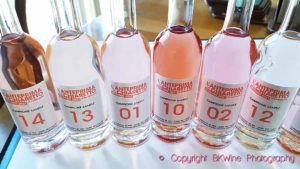 Chiaretto comes from the Italian word “chiaro” which means light or pale. Chiaretto then becomes something even brighter; simply a lighter shade of pale. It sums up well the colour of the rosé wine chiaretto di bardolino. Sometimes you almost get the feeling that the wine is white. That the colour is beautiful in the bottle is important. The appearance of a rosé is part of the attraction. We have tasted a large number of chiaretto di bardolino and selected the ones we think are the best. This summer, it’s the 2020 vintage is headlined. We have tasted blind 50 of the wines from this year and selected the ones that we liked best. We have two different top lists to offer you at BKWine Magazine:
Chiaretto comes from the Italian word “chiaro” which means light or pale. Chiaretto then becomes something even brighter; simply a lighter shade of pale. It sums up well the colour of the rosé wine chiaretto di bardolino. Sometimes you almost get the feeling that the wine is white. That the colour is beautiful in the bottle is important. The appearance of a rosé is part of the attraction. We have tasted a large number of chiaretto di bardolino and selected the ones we think are the best. This summer, it’s the 2020 vintage is headlined. We have tasted blind 50 of the wines from this year and selected the ones that we liked best. We have two different top lists to offer you at BKWine Magazine: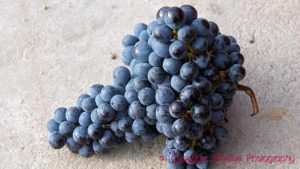 I remember my first cabernet franc in France, many years ago. The restaurant served it freezing cold. It was customary at the time to keep the wines from Chinon and Bourgueil in the fridge with the white wines. A cabernet franc from the Loire was just un petit rouge, nothing serious. Well, cabernet franc came in from the cold a while back. The revenge has been sweet. There’s hardly a winemaker out there who doesn’t want to try making a cabernet franc wine. The grape’s elegance and freshness attract both producers and consumers.
I remember my first cabernet franc in France, many years ago. The restaurant served it freezing cold. It was customary at the time to keep the wines from Chinon and Bourgueil in the fridge with the white wines. A cabernet franc from the Loire was just un petit rouge, nothing serious. Well, cabernet franc came in from the cold a while back. The revenge has been sweet. There’s hardly a winemaker out there who doesn’t want to try making a cabernet franc wine. The grape’s elegance and freshness attract both producers and consumers.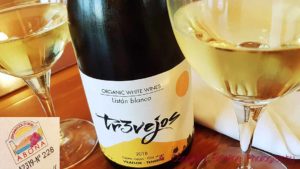 The Canary Islands have sun, beaches, volcanoes and tourists. But they also have wine. In fact, they have an important place in the history and evolution of world-wide wine growing. On the Canary Island they still grow ancient grape varieties that have virtually disappeared from continental Europe. But some of these old varieties found their way to South America and are the basis for a very large part of South America’s wine production; the “criolla” family. From these historic varieties the Canary winemakers still make some really delicious – and quite unusual and rare – wines. We have tasted them and tell you the story of the wines and of the grapes.
The Canary Islands have sun, beaches, volcanoes and tourists. But they also have wine. In fact, they have an important place in the history and evolution of world-wide wine growing. On the Canary Island they still grow ancient grape varieties that have virtually disappeared from continental Europe. But some of these old varieties found their way to South America and are the basis for a very large part of South America’s wine production; the “criolla” family. From these historic varieties the Canary winemakers still make some really delicious – and quite unusual and rare – wines. We have tasted them and tell you the story of the wines and of the grapes.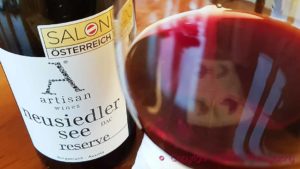 Austria is so much more than grüner veltliner. You will notice this not least when you come to Burgenland. Drinking the regions red wines from zweigelt, blaufränkisch, sankt laurent and merlot will forever change your perception of Austria as a white wine country. We have recently tasted wines from a small and ambitious producer called Artisan Wines, located in the town of Halbturn. The tasting was an excellent illustration of the great variety you find in Burgenland. Burgenland is in easternmost Austria and borders Styria (Steiermark) in the south and Lower Austria (Niederösterreich) in the north.
Austria is so much more than grüner veltliner. You will notice this not least when you come to Burgenland. Drinking the regions red wines from zweigelt, blaufränkisch, sankt laurent and merlot will forever change your perception of Austria as a white wine country. We have recently tasted wines from a small and ambitious producer called Artisan Wines, located in the town of Halbturn. The tasting was an excellent illustration of the great variety you find in Burgenland. Burgenland is in easternmost Austria and borders Styria (Steiermark) in the south and Lower Austria (Niederösterreich) in the north. Maybe you find it strange that I call Willi’s Wine Bar the first real wine bar in Paris. You could, of course, drop in at many Parisian bars and cafés before 1980 and have a glass of wine. Often, though, it would be a beaujolais or a sauvignon of unclear provenance. The sheer choice of wines at Willi’s and the fact that the producer was mentioned for every wine set it apart. It was not “un ballon de beaujolais, s’il vous plait”. Now, Paris is full of such wine bars, but Willi’s started it.
Maybe you find it strange that I call Willi’s Wine Bar the first real wine bar in Paris. You could, of course, drop in at many Parisian bars and cafés before 1980 and have a glass of wine. Often, though, it would be a beaujolais or a sauvignon of unclear provenance. The sheer choice of wines at Willi’s and the fact that the producer was mentioned for every wine set it apart. It was not “un ballon de beaujolais, s’il vous plait”. Now, Paris is full of such wine bars, but Willi’s started it.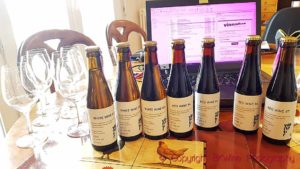 Wine defects. No-one wants them. But what is it really? Numerous things can spoil a wine. No doubt many wines were spoilt back in the old days when wine producers had little knowledge of wine chemistry and microbiology. Today, things are different. Today, almost all wines leave their wineries faultless. But not quite all. The dangers of bacteria, bad yeast etc., are still there, lurking, but most producers know how to counteract. But sometimes mistakes can happen. Here are some of the most frequent wine faults, what effect they have on the wine and what they winery can do to avoid them. It is easy to avoid them.
Wine defects. No-one wants them. But what is it really? Numerous things can spoil a wine. No doubt many wines were spoilt back in the old days when wine producers had little knowledge of wine chemistry and microbiology. Today, things are different. Today, almost all wines leave their wineries faultless. But not quite all. The dangers of bacteria, bad yeast etc., are still there, lurking, but most producers know how to counteract. But sometimes mistakes can happen. Here are some of the most frequent wine faults, what effect they have on the wine and what they winery can do to avoid them. It is easy to avoid them.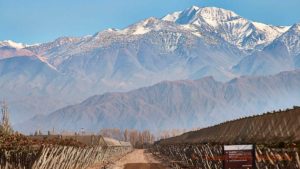 Malbec is Argentina’s most important grape. You can find it in all price ranges, from entry-level to expensive prestige wines. Producers today go to a lot of effort to find the right places to plant malbec, often at higher altitudes. A lot is happening in Argentina’s largest wine region, Mendoza. Our days here are filled with fantastic wine and food experiences together with forward-thinking wine producers.
Malbec is Argentina’s most important grape. You can find it in all price ranges, from entry-level to expensive prestige wines. Producers today go to a lot of effort to find the right places to plant malbec, often at higher altitudes. A lot is happening in Argentina’s largest wine region, Mendoza. Our days here are filled with fantastic wine and food experiences together with forward-thinking wine producers. South Africa is a fantastic wine country with the wine world’s most beautiful scenery. The natural conditions for viticulture are superb. The climate is pleasant with sunny and warm, but not too hot, summers. The rain comes mostly in winter. No wonder we like the wines so much. During our tour in February, we will enjoy warm days. The grapes are about to ripen. The harvest is at the door.
South Africa is a fantastic wine country with the wine world’s most beautiful scenery. The natural conditions for viticulture are superb. The climate is pleasant with sunny and warm, but not too hot, summers. The rain comes mostly in winter. No wonder we like the wines so much. During our tour in February, we will enjoy warm days. The grapes are about to ripen. The harvest is at the door. It is hard to imagine that müller-thurgau was New Zealand’s most planted grape until 1996. Now it is almost completely gone (and not missed). Sauvignon blanc, pinot noir, chardonnay and pinot gris dominate the vineyards. Vines are grown on both the North Island and the South Island, and we will visit several of the wine regions. We meet in Auckland, the country’s largest city, and from there, we will go in our comfortable coach all the way down to Queenstown on the South Island. We will go by boat between the two islands, a pleasant trip of around three hours.
It is hard to imagine that müller-thurgau was New Zealand’s most planted grape until 1996. Now it is almost completely gone (and not missed). Sauvignon blanc, pinot noir, chardonnay and pinot gris dominate the vineyards. Vines are grown on both the North Island and the South Island, and we will visit several of the wine regions. We meet in Auckland, the country’s largest city, and from there, we will go in our comfortable coach all the way down to Queenstown on the South Island. We will go by boat between the two islands, a pleasant trip of around three hours.





